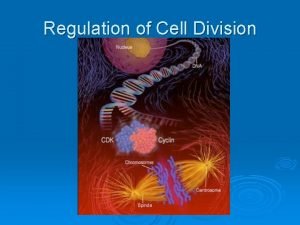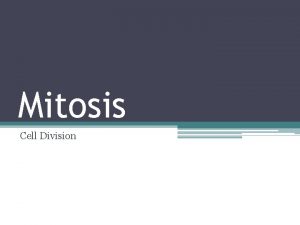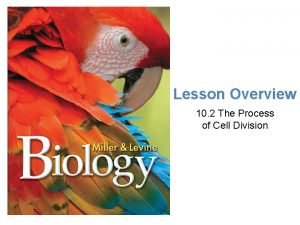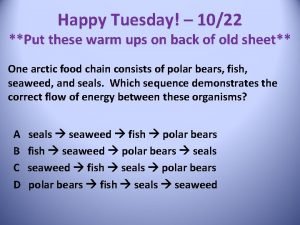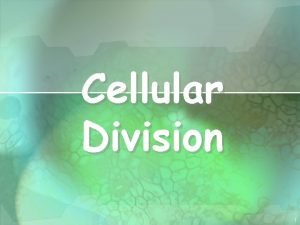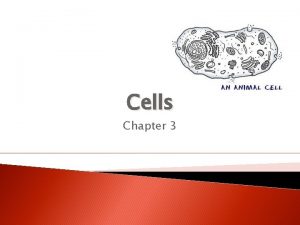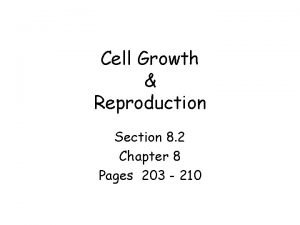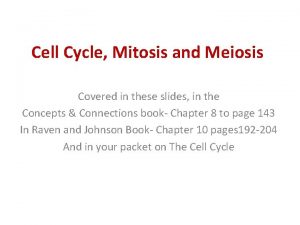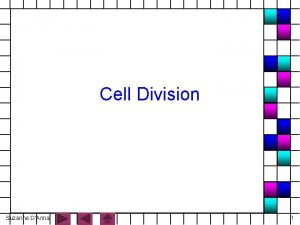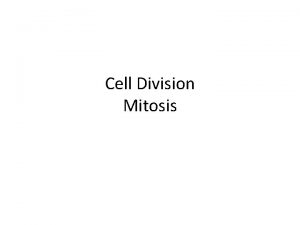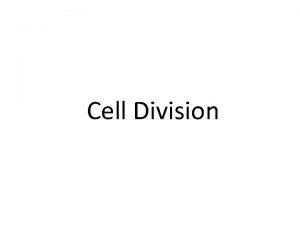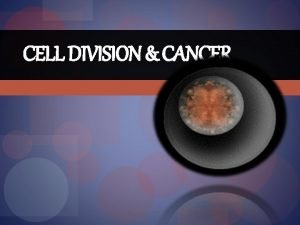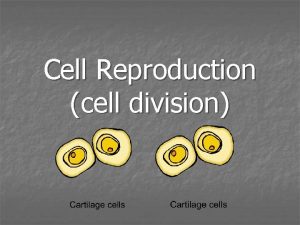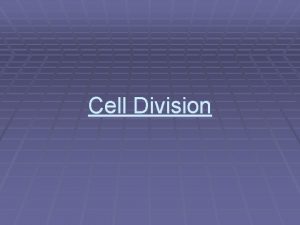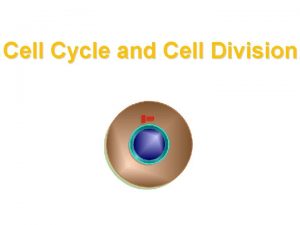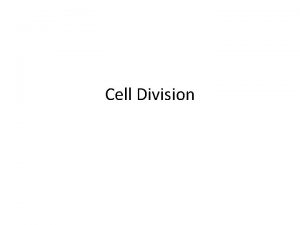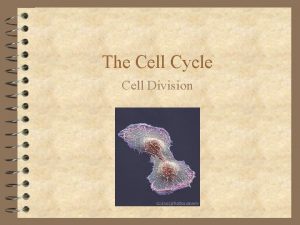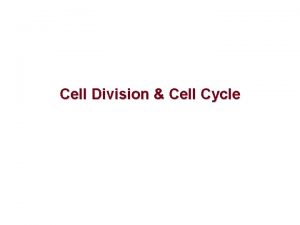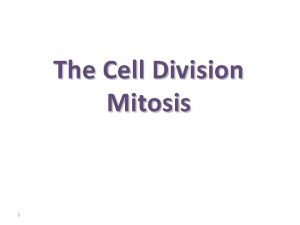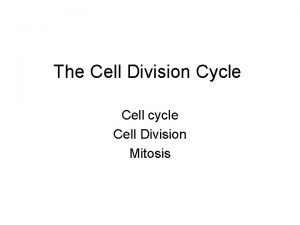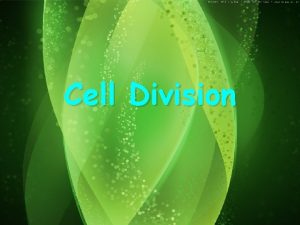Cell Division 1 6 Cell Division Process were



















- Slides: 19

Cell Division 1. 6

Cell Division �Process were one cell nucleus divides into two genetically identical nuclei.

Cell Cycle �Series of steps cells go through. �Includes G 1, S, G 2, & M. �G 1, S, G 2 make up interphase. �If a cell does not divide, it is in G 0.

THE THREE PARTS OF INTERPHASE G 1 – CELL GROWS AND FUNCTIONS NORMALLY (PROTEIN SYNTHESIS / MITOCHONDRIA REPLICATION ETC. ) 2. S – DNA IS COPIED. At this point the mass of DNA in the cell has doubled. 3. G 2 – CELL CHECKS ITSELF AND PREPARES TO ENTER MITOSIS 1.

Chromosomes �Formed by DNA in the nucleus supercoiling around histones (proteins) with enzyme help. �Have a centeromere and telomeres.

Mitosis �M phase of mitosis. �Cell divides into two new cells over 4 distinct phases.

Prophase � 1 st stage. �Chromosomes are visible for the first time in structures called sister chromatids. �Nuclear membrane breaks down.

Centrioles - the main microtubule organizing center Mitotic Spindle microtubules – cytoskeleton that pulls apart chromosomes

Metaphase �SPINDLE MICROTUBLES – LINE UP THE SISTER CHROMATIDS AT THE EQUATOR

Anaphase �Sister chromatids split at centromeres, and individual chromosomes move to opposite poles of the cell.

Telophase �Chromosomes reach the poles, nuclei start to form at opposite poles. Chromosomes relax into chromatin fiber.

Cytokinesis �Happens after mitosis. �Division of cytoplasm. �Differs in plants and animals.

Animal Cytokinesis �Cytokinesis occurs by the cytoplasm pinching inwards forming a cleavage furrow.

Plant Cytokinesis �Vesicles move towards the center of cell and fuse to form plasma membrane. �More vesicle move pectin out (exocytosis) of the membrane forming middle lamella. �Both cells deposit cellulose reforming the cell wall.

Purposes of Mitosis Growth: multicellular organisms increase their size This growth involves increasing the number of cells through mitosis. These cells will differentiate and specialize their function. Embryonic Development Tissue Repair: As tissues are damaged they can recover through replacing damaged or dead cells. Asexual Reproduction: the production of offspring from a single parent using mitosis. offspring are genetically identical to each other and to their “parent”

Cyclins �Family of proteins that help regulate the cell cycle. �Bind to proteins called cyclin dependent kinases. �Kinases bind phosphates to other proteins, making them carry out processes for each specific phase.

Tumors �Abnormal group of cells. �Benign tumors= tumors that stick together. �Malignant tumors= tumors who can spread. �Diseases caused by malignant tumors are called cancers.

Cancer �Involves a change in genes. �Oncogenes control cell division, mutation of these leads to uncontrolled cell growth. �Chemicals, viruses, and radiation that can cause cancer are carcinogens.

�If one tumor moves and forms secondary tumors, this is called metastasis.
 Cell cycle and cell division
Cell cycle and cell division Cell cycle and cell division
Cell cycle and cell division Cell cycle phases in order
Cell cycle phases in order Was/were supposed to
Was/were supposed to 369 times 2
369 times 2 What is the missing number in the synthetic-division array
What is the missing number in the synthetic-division array Terms of division
Terms of division Factoring polynomials using synthetic division
Factoring polynomials using synthetic division M phase
M phase Frequency of cell division
Frequency of cell division Concept map of cell division
Concept map of cell division Interphase of cell cycle
Interphase of cell cycle Plant cell division
Plant cell division Ipmatc acronym ideas
Ipmatc acronym ideas What is early prophase
What is early prophase Chapter 3 cells
Chapter 3 cells Section 8-2 cell division
Section 8-2 cell division Asexual reproduction cell division
Asexual reproduction cell division Cell division mitosis and meiosis
Cell division mitosis and meiosis Do sister chromatids separate in meiosis
Do sister chromatids separate in meiosis









